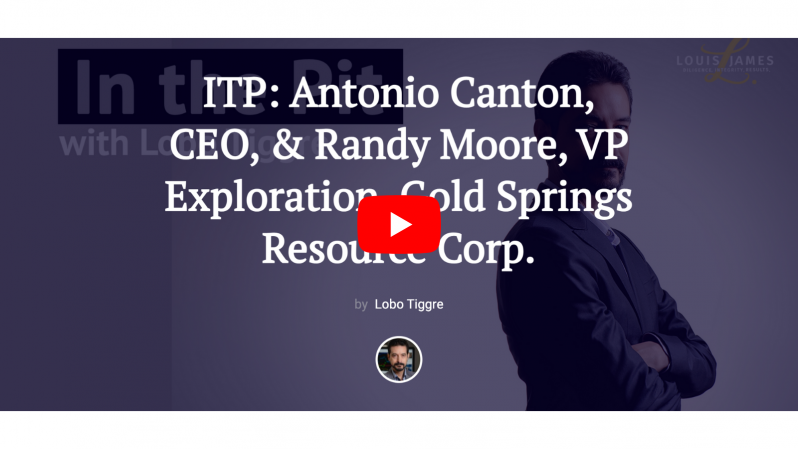After this interview, we sent Lobo some additional information on the two main points that concerned him:
TOPOGRAPHY OF GOLD SPRINGS:
The 3D map Lobo took from our website was designed only to locate all the targets on a small map and not to give the objective topography of the project. It is not to scale, neither in height, nor in width, nor in length. To get an objective idea of the topography of the area, everyone can look at our Jumbo Trend Video here, or even on Google Earth if you look for Jumbo mine Utah.
COMPANY’S OBJECTIVE:
Lobo mentioned twice the Marathon project located in Newfoundland as a comparison with Gold Springs and our Company’s Objective. We disagree with him as there are at least 4 major differences with Gold Springs when you analyze their feasibility study. The first two concern the high Capex and high Striping ratio of 7.22/1 that Gold Springs does not have. The third concerns royalties: 0 NPI (Net Profit Interest) on Gold Springs and 7.5% NPI on most of the Marathon property. 2% NSR (Net Smelter Return) on the entire Marathon property while Gold Springs has a 3% royalty on only 1% of its current resource. The last important difference concerns the permitting. Gold Springs has no threatened and sensitive species, but Marathon has several threatened and sensitive species. The Caribou has been especially assessed as special concern as the project is predicted to result in significant adverse effects on them. This project has also 3 other Species at Risk (SAR) and 3 other species of conservation concern (SOCC).

